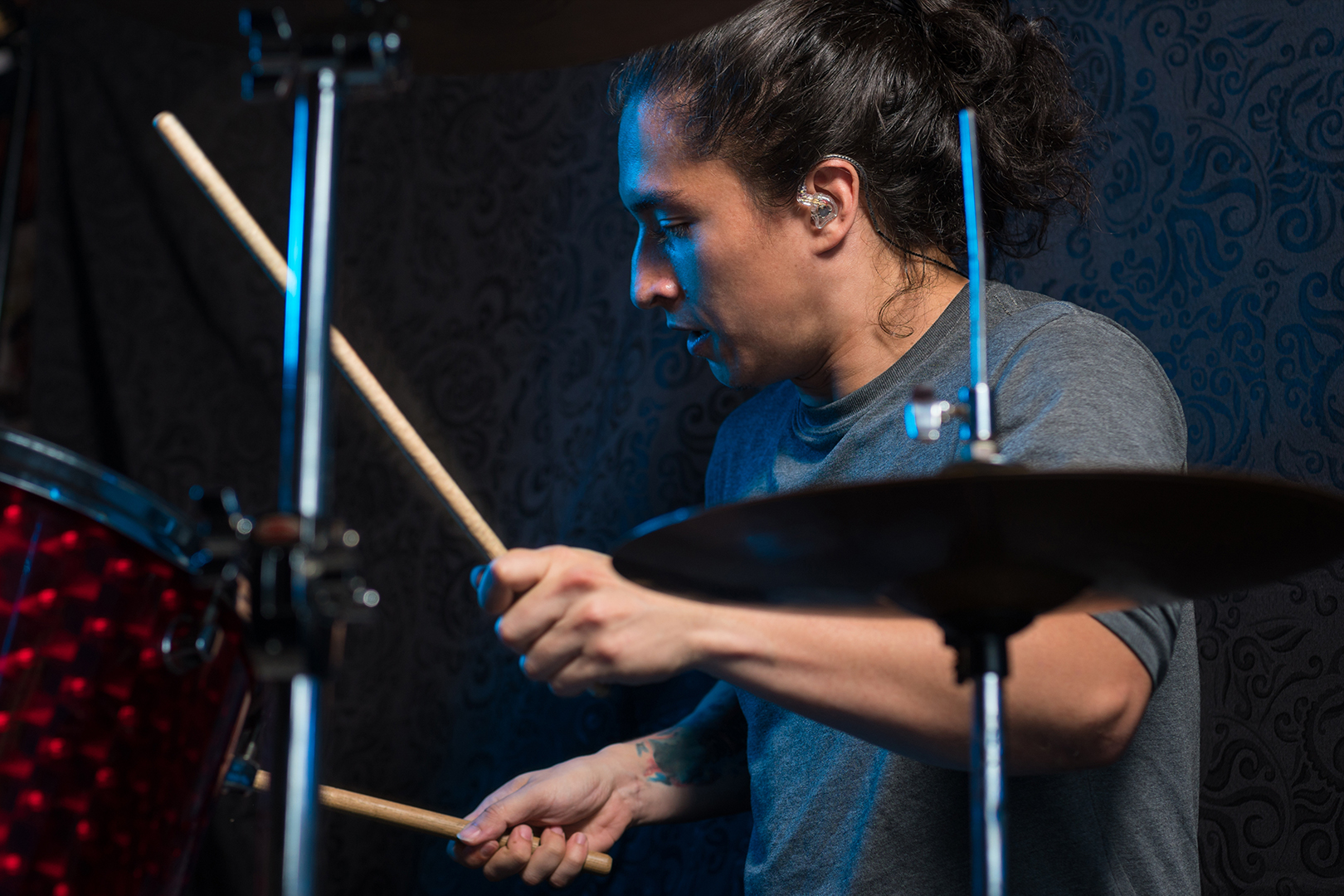Sound exposure is inevitable and prolonged exposure to intense sound is an integral part of a musician’s everyday activities, both related to and outside performance.
Your existing hearing capacity is vital to composers and musicians. Maintaining good function of this delicate sense at your current level, through recognition and management of risks to hearing health is essential to your career.
Loud sounds are not necessarily unpleasant or classified as noise; they include sounds we enjoy listening to, such as music.
Exposure to very loud sounds or prolonged exposure to moderate sounds can injure the vulnerable hair-like structures of the inner ear and lead to permanent and irreversible hearing loss, known as Noise-Induced Hearing Loss (NIHL) (Zhao, Manchaiah, French, & Price, 2010).
Sound exposure can also cause other hearing problems such as:
- Tinnitus (ringing in the ears)
- Hyperacusis (reduced tolerance to louder sounds)
- Diplacusis (problems with pitch perception)
Sound Exposure Levels
Sound exposure is influenced by the duration, intensity and proximity to the sound source. measured in decibels (dB). Daily or weekly exposure is called noise dose.
In most musical contexts, A-weighting is the standard choice as it better represents what musicians and audiences actually hear, but C-weighting provides valuable additional information about low-frequency content that could still affect hearing health.
Exposure limits are defined in legislation and the Health and Safety Executive (HSE) has published guidance.
What about Electronic Audio Devices?
Personal audio devices (headphones, earphones, and in-ear monitors) should be used within safe sound exposure limits as defined in European Directive 2003/10/EC and BS EN 13819.
For individuals using these devices as hearing protection (like musicians’ in-ear monitors), ensure they’re properly certified for hearing protection under BS EN 352 standards.
Diagnosis of Noise-Induced Hearing Loss
Hearing health can be monitored through various tests, including Pure Tone Audiometry (PTA) which helps identify potential difficulties in speech interpretation. While PTA is valuable for assessing and managing hearing loss, musicians’ enhanced auditory skills may influence test results. Additionally, PTA may not detect changes until after permanent damage has occurred.
Otoacoustic Emissions (OAE) testing offers complementary information by potentially identifying early changes in inner ear function, before noticeable symptoms develop. These symptoms can include tinnitus, diplacusis, or hyperacusis.
When results are clearly explained and presented, both PTA and OAE tests can help individuals understand their hearing health and make informed decisions about their sound exposure habits.
Risk Management
When implementing control measures, the hierarchy of control model defines the order to follow when planning to risk reduction and should be considered in the following order:
- Controlling sound at source
- Prevent and control transmission of sound to individual
- Individual protection
The HSE is very clear that management should not skip ahead to the easiest solution but must reduce risk “as low as reasonably practicable.”
1. Controlling sound at source
Consider:
- Planned rest/quiet time and provision of quiet space for recovery
- Consideration of appropriate design of studio space (i.e. small rooms with untreated walls/mirrors potentially represent more significant risk than large, sound-treated areas)
- Limit or avoid non-vocational and personal sound exposure (e.g. transport, personal music-players)
- Careful consideration of repertoire, alternating louder, intense pieces with quieter work, allowing time for recovery from exposure
- Using appropriate instruments (e.g. Baroque instruments for Baroque music, solutions for electronic versus classical instruments)
2. Prevent and control sound exposure
- Ensure adequate distance between musicians. Sound Advice suggests 2m2 per musician
- Be aware that providing space may not always decrease exposure
- Record, respond to, and reduce the duration and intensity of exposure
Consider informative visual aids/noise levels indicators. Personal sound-level apps can provide useful information.
If it is not possible/practical to reduce exposure to loud sounds, then suitable protection is essential. Use hearing protection appropriate to the assessed risk. If potential exposure presents only a marginal risk, then suitable protection may be different from that required by someone who will be exposed to higher risk.
The Musicians’ Hearing Health Scheme provides specialist services for musicians and composers Musicians’ Hearing Health Scheme – Musicians’ Hearing Services
BAPAM-Hearing-Conservation-Guidelines-for-the-Performing-Arts


